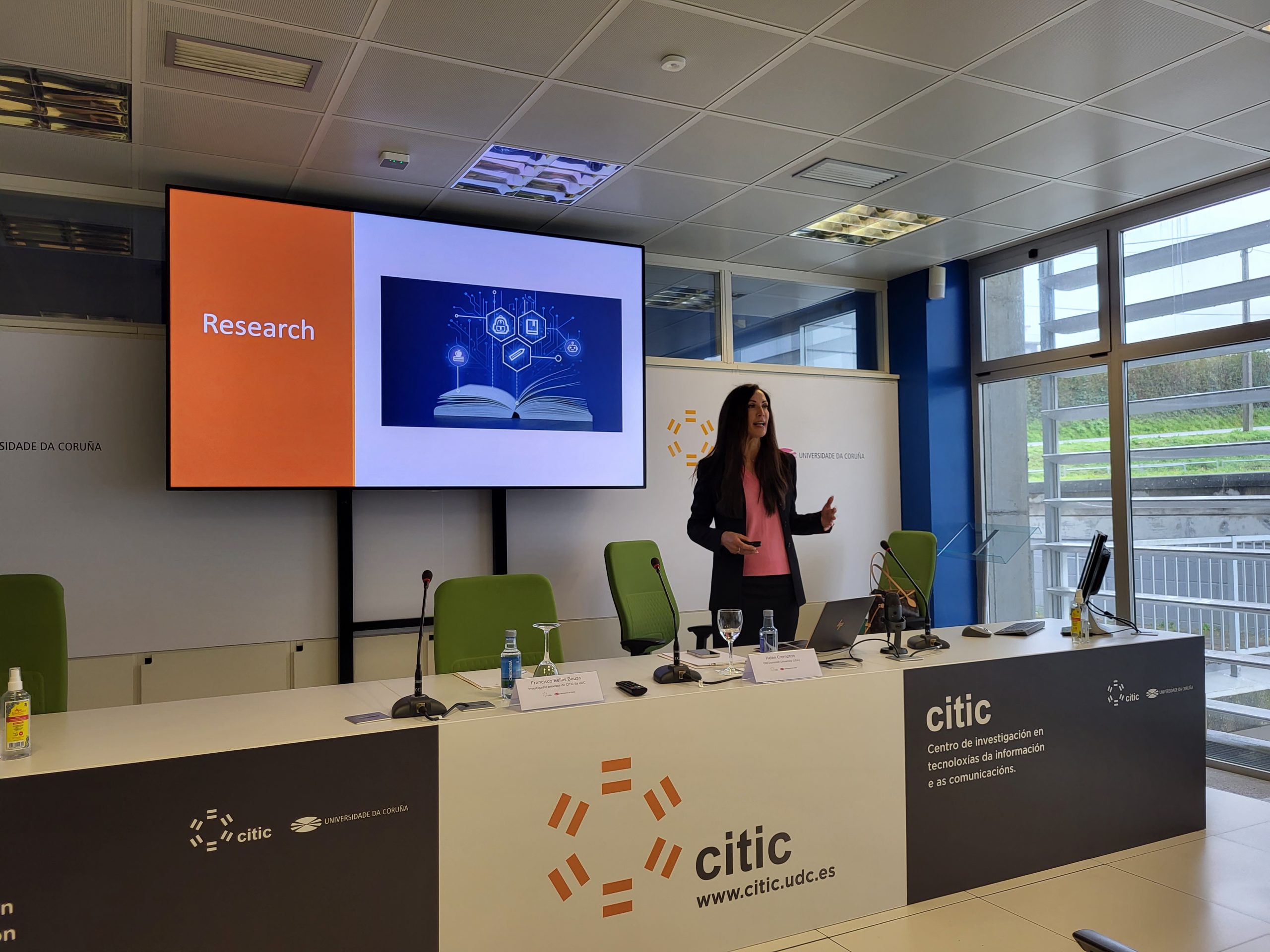
Helen Crompton speaks at CITIC on the role of artificial intelligence in education
03/03/2023 – CITIC
«ChatGPT marks the arrival of a new breed of AI tools that change the way we think about education»
Associate Professor of Educational Technology and PhD in Mathematics Education and Technology in Education at Old Dominion University (ODU) in Norfolk, Virginia, recently gave a lecture in which she discussed the role of AI in Education. Helen Crompton, director of the Technology Enhanced Learning Lab (TELL) and the Virtual Reality Lab at ODU, focuses her research on learning with technologies such as mobile devices, artificial intelligence and virtual reality.
During her presentation, the researcher gave an overview of the state of AI in education and analysed trends in its use, highlighting the possibilities it offers for students, teachers and administrations. Specifically, she discussed ChatGPT, its uses and limitations. Crompton highlighted the potential of this system to transform education and the opportunities that this AI tool can bring to students and teachers, such as a student being able to ask ChatGPT to explain difficult concepts using different learning styles, languages and reading levels.
-In your opinion, how does AI impact on Education?
AI have great potential to revolutionize education. We are already using AI in many educational tools. What is helpful about the progression of AI is that it is becoming easier to use and we do not have to have specific knowledge and skills to use these AI tools. For example, Google Search uses AI. What we experience is that it just works well for finding what we need. It corrects our spelling, gives us other search ideas, and closely aligns the results to what we are looking for. AI is helping administrators manage collect, analyze, and organize student data in a way that is humanly impossible with the typical resources we have.
-Tell us some uses of AI in Education (identify new topics of study).
The research shows that there are a variety of uses of AI in education. There are four major trends.
- Assessment and Evaluation – AI can be used to generate questions at a variety of levels, and even create questions to match a student’s ability level and increase or decrease difficulty as necessary.
- Predicting – AI can use data to predict a variety of topics, such as student achievement and satisfaction in a course, as well as those at risk of failing or dropping out.
- AI Assistant – AI can provide assistance to students with activities, such as providing prompts, next steps, and answering questions.
- Managing Student Learning – AI can provide administrators with high functionality in analyzing learning, and designing instruction.
A possibly avenue for further focus is on advancing voice to text capabilities to AI can understand the message we are trying to convey. This can be especially helpful for supporting students with disabilities and other learning needs.
-What do you think about virtual tutors, will AI help teachers and students?
AI tutors is one of the four may ways AI is used in education. These virtual tutors can never replace physical instructors, but they can be very helpful in providing support in tasks that allow the instructor to perform their role better and help students when a physical instructor is unavailable. Virtual tutors can provide 24/7 assistance and instruction at any time and any place. Instruction can be immediately provided at a level relevant to that individual student and relevant prompts as needed. AI Tutors are very effective when working alongside the main physical instructor.
-How do you think GPT chat (or similar) will impact on education?
We are at a turning point in the history of education. ChatGPT marks the advent of a new type of generative AI tools that change the way we think about education. While there have been great technologies that extend and enhance education, we have often used these 21st century technologies with 20th century teaching approaches. ChatGPT renders some of those past practices ineffective. Education now needs to be different in promoting students critical thinking, problem solving, and practical applications.
-Do you think that AI can reduce school dropout rates, and to what extent can it motivate students to continue their studies?
There are specific AI tools for reducing school dropout rates and motivating students.
Predicting – AI can use data to predict a variety of topics, such those at risk of failing or dropping out. AI can let the instructor know if they have not recently been working on activities in the online class. It can note those that follow the typical actions and academic actions of students that often dropout. This information is important to the instructor in being able to reach out to the student quickly to avoid these dropouts.
AI Assistant – AI can provide outreach to students to promote student motivation. For example, AI can send text messages as reminders, prompts, and support as needed. Also, if a student is struggling, that AI assistance can be helpful before students reach frustration level.
-What are the main differences between the US and Europe in the application of AI in education?
Across the world, AI applications are similar in nature. English is a language that is predominant in AI tools, but that soon is translated into other languages. The use of AI does not appear to be more widespread or less than in Europe. It is often determined by the individual instructor and if they embrace new technologies or not.







